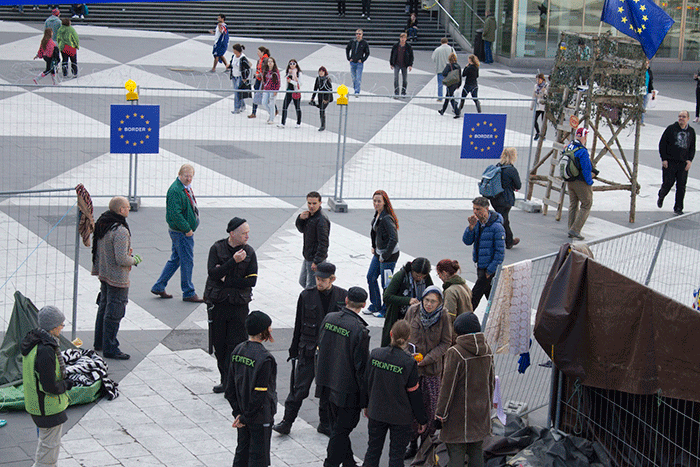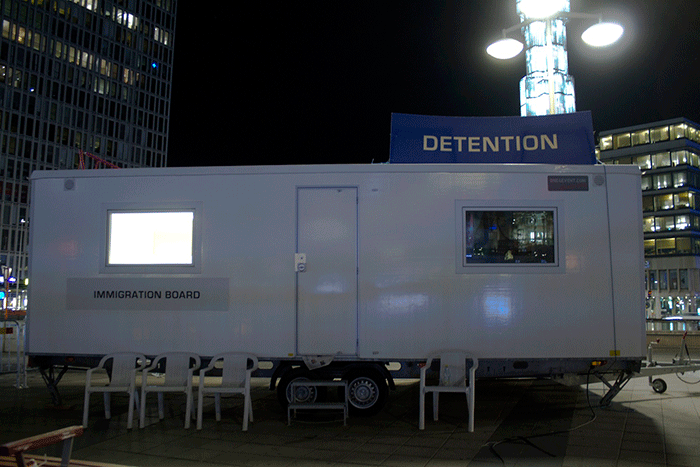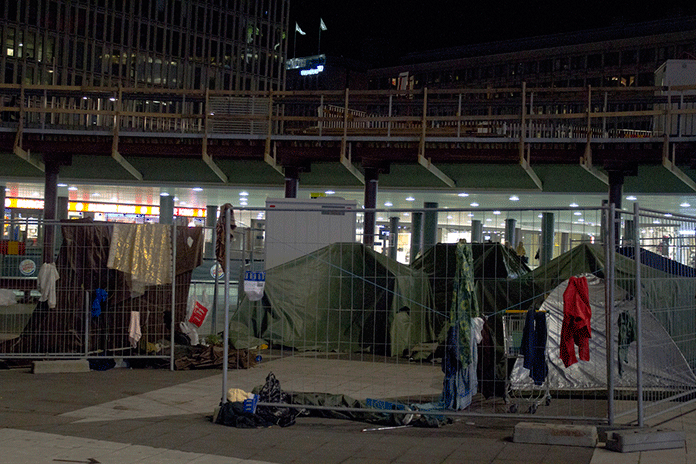Stockholm - Dublin 2

Due to
the regulation the EU country where a person first arrives to is responsible
for dealing with the application. Rising fascism, lack of work, lack of
ID papers or a lack of shelter means that many refugees to continue further
into Europe. Those who manage to cross the borders and apply for asylum
from a more stable state often face a deadlock.

The larp’s plot simulated the Dublin II limbo and shed light on the conditions that the refugees face at the border states. The interaction between the players and the non-players was one of the larp’s main ideas. The game mechanics were planned to create situations where the characters and the people of Helsinki could meet. The game design included a real lawyer, journalists and supporting characters from the NGO scene. They were in- vited to participate in the larp as themselves. The lawyer and NGO participants, who worked in real life with asylum seekers gave the players insight to their work and supported the game’s authenticity.

The reality-based theme gave the larp a documentary character. It required extensive background research. The role characters were based on the real life stories of asylum seekers and interviews of border guards. My character, Maria Isabel Aurelia Valdez is a Spanish border guard who has been working for Frontex for four and a half years. Due to injury she mainly deals with paperwork and return flights.

The events of the games concentrated on the Stockholm´s Sergels Square and the Helsinki´s Lasipalatsi Square which for one weekend were staged as large refugee camps. From the squares the game spread also to offices and institutions staged nearby the squares. The border guards’ office was just around the corner – a small porta-cabin humming electronics and grey office furniture – where the suspects were taken for further investigation. The game lasted around the clock. The citizens were able to walk freely around the whole area, but if the migrant players were spotted approaching the border, they would be stopped and interrogated.

The installation attracted considerable attention – much more than the ‘real’ detention centre located just outside of the city.

Text extracts and images curtesy of Kaijonen & Raekallio
